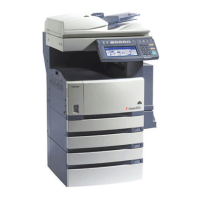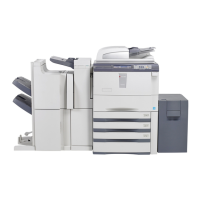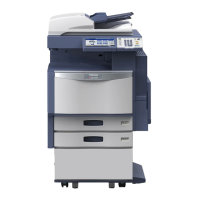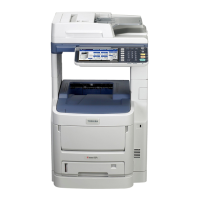ARDF August, 2006
6-24
6.4.8 SLIP DETECTION
[A]: Separation sensor
[B]: Skew correction sensor
These two sensors are used to measure the amount of slippage and to correct for
this.
The machine measures the time it takes for the original to get to the separation
sensor [A] after the [Start] key is pressed.
• If the original arrives at the correct time, it feeds normally.
• If the original arrives late, the machine enters the slip mode.
In the slip mode, the machine measures the time for the leading edge of the
original to move from the separation sensor to the skew correction sensor [B].
The machine uses this time to adjust the length of time that the entrance roller
stays off to correct skew. This stops feed for enough time for the original to be in
the correct position for feeding.

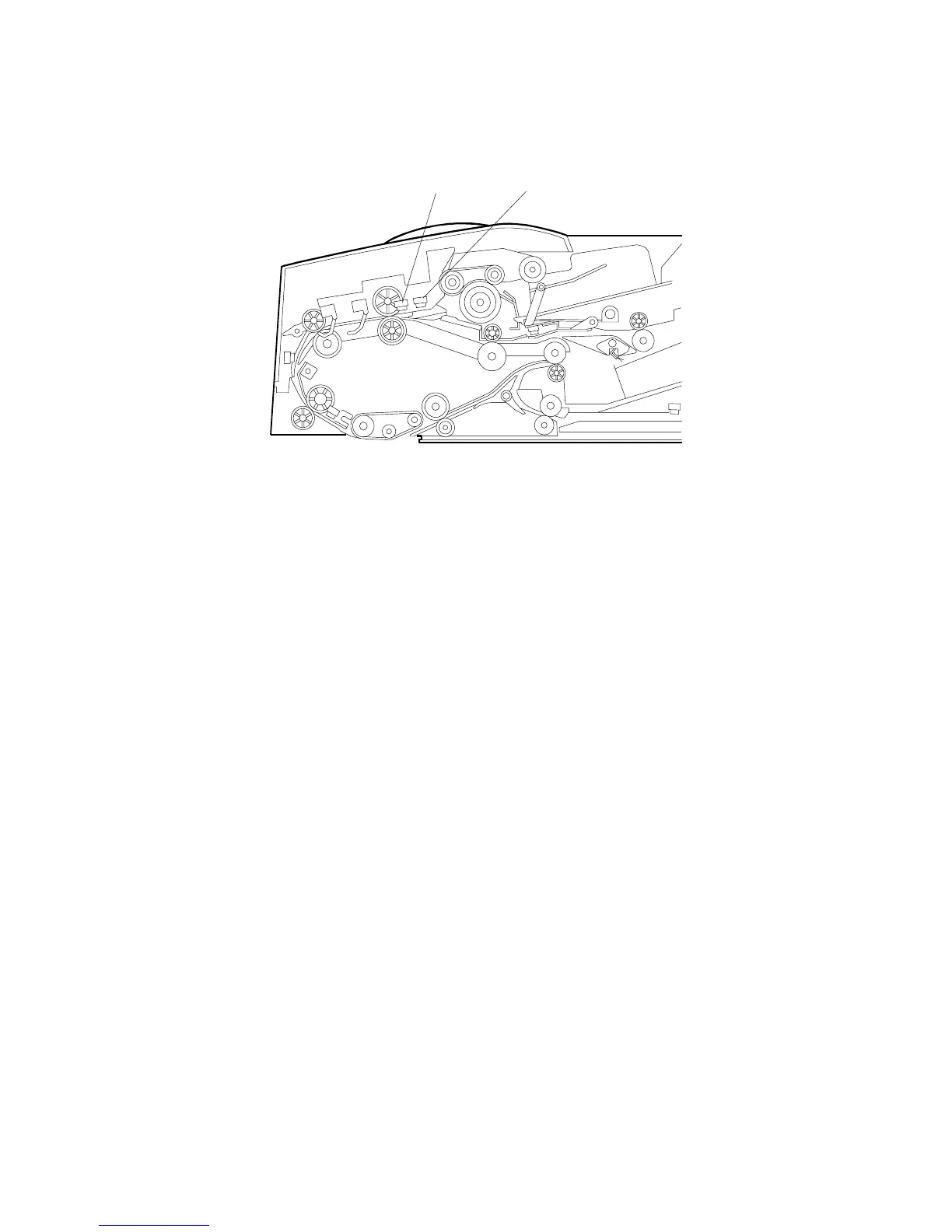